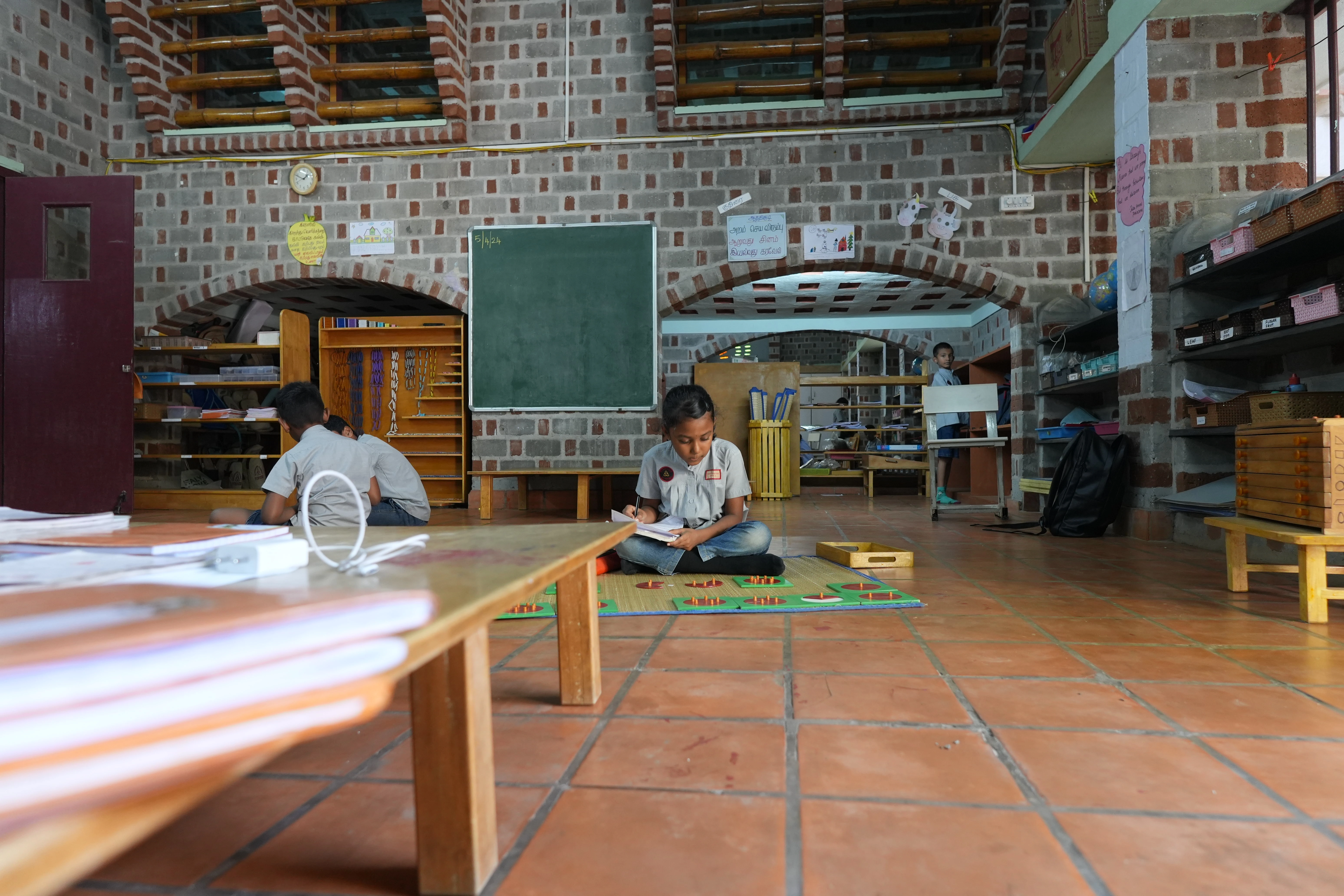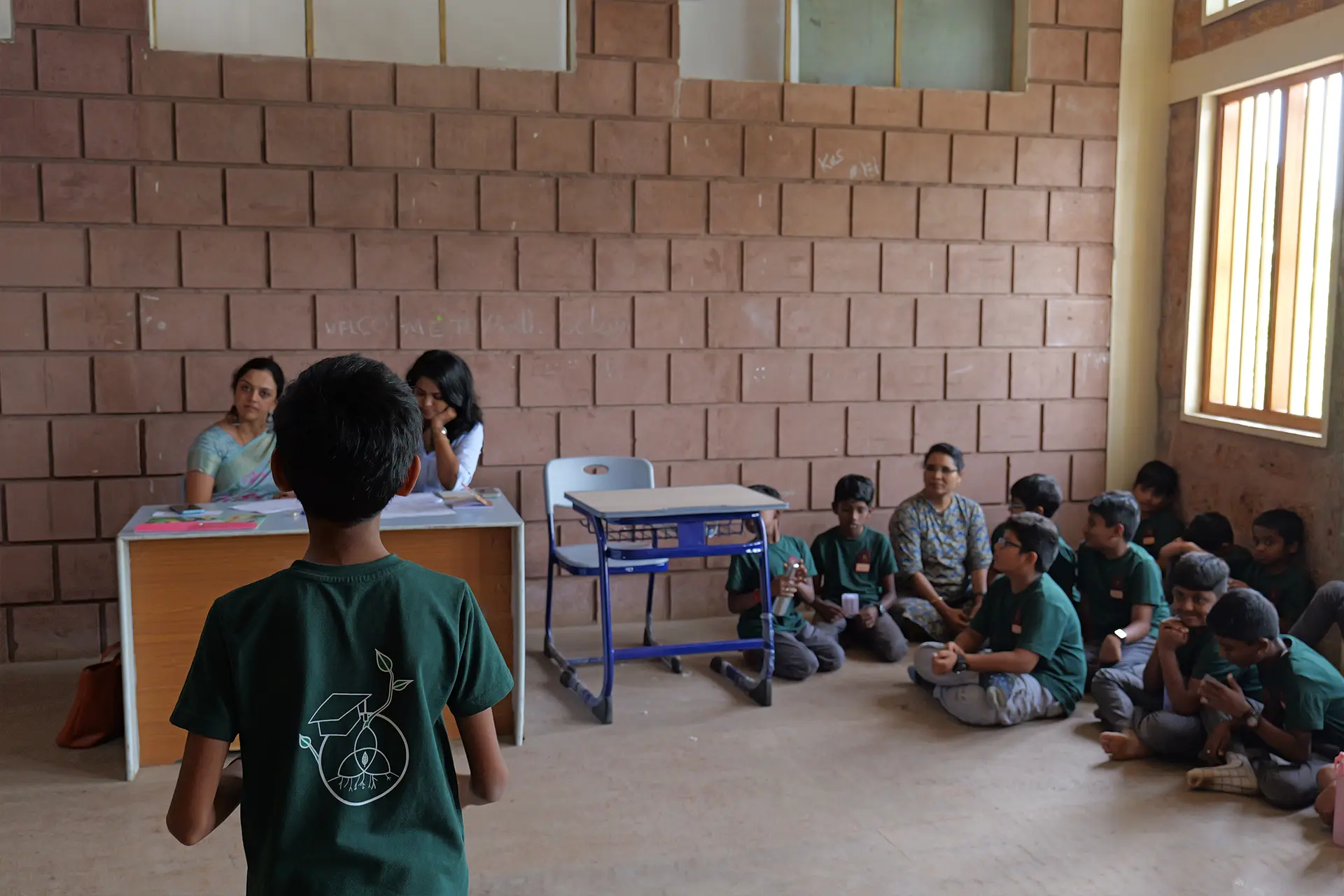The Peace Table: A Space for Emotional Growth

At Samskaara Academy, education goes beyond academics. We believe that true learning also means understanding oneself, especially one's emotions. For children in their elementary years, emotions can often feel confusing. There are moments of joy, frustration, excitement, or anger that they may not yet know how to express or manage. To help them navigate these emotions with grace, we have created a special space in every classroom called the Peace Table.
The Peace Table is a quiet corner designed for self-regulation and reflection, where children learn to identify what they feel, express it safely, and return to calm. It teaches that peace is not the absence of emotion but the understanding of it.
A. A Safe Space for Emotional Awareness
During the elementary years, children begin to experience emotions more deeply. They start to understand friendship, fairness, independence, and responsibility, all of which can trigger strong feelings. The Peace Table allows them to take a pause, sit down quietly, and name what they are feeling.
This step of identifying emotions is the foundation of emotional intelligence. When children learn to recognize what they feel, whether it is anger, sadness, or confusion, they also learn to manage it instead of reacting impulsively.
At Samskaara, we see this as part of education itself. Just as children learn mathematics and science, they also learn how to listen to their emotions and handle them with empathy and self-awareness.
Sometimes, a child may walk into school carrying emotions that began outside the classroom perhaps tension at home or a disagreement they witnessed. At Samskaara, we recognise that learning cannot happen until a child feels calm and safe inside. When this happens, students can approach an adult and ask for time at the Peace Table. They are given space to sit there until they feel ready to return. This gentle practice helps them understand that emotional wellbeing is just as important as academic progress.
B. Circle Time: Talking About Feelings Together
Once children have calmed down and understood what they are feeling, they often share their experiences during Circle Time.
Circle Time is a daily ritual where all students gather with their adults (we call our teachers "adults") to talk, listen, and reflect. Here, children discuss their thoughts openly, share what happened at the Peace Table, or even talk about how they handled a conflict. It encourages communication, understanding, and compassion among peers.
Through these conversations, children realize that emotions are normal and shared, and that expressing them makes them stronger, not weaker.
C. Learning Through Material: Presentations that Heal
In a Montessori setting like Samskaara, every concept is introduced through working materials, and even emotions are explored the same way.
Sometimes, after a child visits the Peace Table, an adult may offer a short presentation related to emotions. This might include stories, art, or sensory materials that help children reflect and connect. By introducing emotional awareness through tactile experiences, children learn that understanding feelings is also a part of learning, just like math or science.
D. Valampuri Sangu: Healing Through Sound
At the Peace Table, children often use calming materials that connect them with nature. One of them is the Valampuri Sangu, a large shell from the ocean.
When placed near the ear, the shell produces a soft, rhythmic sound that resembles the ocean's waves. This natural sound is known to soothe the nervous system and calm the mind. Listening to it helps children slow down their breathing and gently release anger or tension.
For a child overwhelmed by strong emotions, this simple act of listening to nature's rhythm becomes a healing experience.
E. Sand Clock: The Power of Stillness
Another element at the Peace Table is the sand clock. Watching the sand slowly trickle down teaches children patience and focus. The movement of sand provides a visual reminder that emotions too will pass, just as time does.
Research shows that activities like observing a sand timer can regulate the nervous system, reducing stress and improving one's ability to handle conflict. For children, this means developing a sense of control over their reactions and learning to pause before responding.
F. Coloring Books: Expression Without Words
Not all feelings can be expressed verbally, especially for younger children. This is where coloring books at the Peace Table play an important role.
When children sit down to color, their minds naturally relax. Colors help release tension and stimulate positive emotions. By choosing shades and patterns, they express what they might not yet be able to say out loud. Over time, coloring becomes their way of processing thoughts and emotions creatively and peacefully.
G. Pebbles and Bottle Glitters: Calming Through Touch and Sight
The Peace Table also includes colored pebbles and glitter bottles. Pebbles are smooth, cool, and grounding. Children often hold them while thinking or talking, which provides comfort and stability.
The glitter bottles, filled with swirling sparkles, are visual tools for calming the mind. When shaken, the glitters dance and slowly settle, a symbolic reminder that our thoughts too can settle if we give them time. Watching this process helps children regain focus and emotional balance.
H. Resolving Conflicts with Kindness
The Peace Table is not just a space for calming emotions, it is also where children learn how to resolve conflicts with empathy and respect. At Samskaara Academy, we understand that disagreements among children are natural. What matters most is how they learn to handle them.
Whenever two children have a disagreement or a fight, they are guided through a presentation on conflict resolution, where adults explain a few simple ground rules that help them express feelings constructively.
The first rule is to pause and take time. Children are encouraged not to resolve conflicts immediately when emotions are still high. Instead, they can fix a time to meet at the Peace Table once they have calmed down. This helps them reflect before reacting.
The second rule is about using positive language. Instead of saying, “You made me angry,” they are guided to express themselves in ways that focus on solutions, such as, “If you had spoken to me gently, I would have felt better.” This shift in language helps children learn empathy and understand the impact of their actions.
Through these gentle conversations, guided by adults only when necessary, children begin to take ownership of their relationships. They understand that resolving a conflict does not mean winning an argument, rather it means restoring peace and mutual respect.
I. Light, Prayer, and Reflection
Children who wish to go deeper into calm can light a small lamp, sit silently, or chant "Om." These simple rituals promote inner peace and reflection. Whether it is through light, sound, or silence, the act helps children reconnect with themselves.
At Samskaara, spirituality is not about religion. It is about nurturing a sense of peace and awareness within. The Peace Table is a reflection of that belief.
J. A Step Toward Emotional Education
Education is not only about understanding the world outside but also about knowing the world within. The Peace Table embodies this philosophy. It gives children permission to pause, to feel, and to process, instead of suppressing or ignoring what they experience.
When children learn to name their emotions early in life, they carry that wisdom into their teenage years and adulthood. It builds resilience, empathy, and emotional maturity, qualities that matter as much as academic achievement.
K. A Reflection of Samskaara's Philosophy
At Samskaara Academy, we believe that emotional well-being and intellectual growth are deeply connected. The Peace Table is more than a corner in the classroom.
By providing children with the space and tools to calm down, reflect, and reconnect, we teach them one of life's most important lessons: peace begins within.
------------------------------------------------------------------------------------------------------------------------------------------------------------------------------------------------------------------------
Contact us
WRITE
CALL
OUR LOCATION
Subscribe to our newsletter
Lorem ipsum dolor sit amet, consectetur adipiscing elit. Suspendisse varius enim in eros elementum tristique.


%202.webp)
